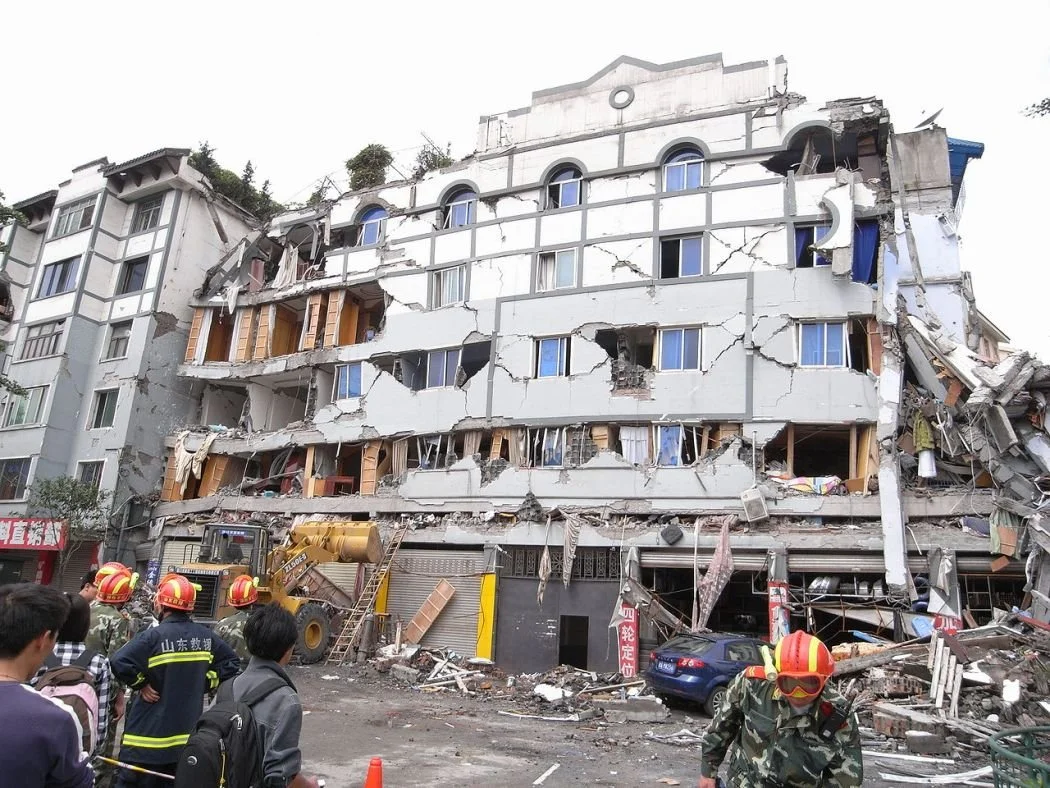CULTURE
From Tofu Dregs to Tin Roofs: What Materials say about our Homes.
Why the materials in our homes matter more than ever—for comfort, sustainability, and surviving Australia’s increasingly extreme climate.
Collapsed buildings in Sichuan Province, People’s Republic of China. Courtesy of PBS News.
Ant Davis in Spring Hill, Brisbane
So! I’ve been falling down research rabbit holes again and this time, it's all about buildings. It started with a phenomenon I recently stumbled upon that occurs primarily in China: tofu dreg buildings. It sounds weird but it is incredibly serious. The name comes from tofu dregs, a watery leftover from making tofu, and the term captures the fragility of these buildings. They may look solid, but beneath the surface, they're dangerously unstable. These are structures thrown up quickly with poor materials, in an effort to stimulate the economy, and end up literally falling apart because corners were cut to save time or money, costing life and limb.
While we don’t have tofu dreg buildings collapsing all over Australia, the concept made me think. What shortcuts are we taking? The answer isn’t collapse, it’s overheating.
Australia is known for its heat so our construction habits are uniquely adapted to our climate, or at least they’re supposed to be. But as anyone who's tried to nap in summer, or had to cocoon in winter, most Australian houses are more ovens or igloos than shelters. And with my generation staring down a lifetime of renting, not buying, understanding building materials and our future homes is incredibly important.
Why Our Houses Get So Hot
A quick look at common building materials in Australia reveals something important: we’re building homes with materials that love to absorb and trap heat. Brick veneer is one of the most popular options, combining a brick exterior with a timber frame. It’s strong and cost-effective, but not great at regulating indoor temperature unless paired with serious insulation.
Then there’s corrugated iron roofing, lightweight and cheap, but notorious for turning homes into hotboxes (I mean its metal!) Queenslanders were designed to tackle this: timber construction, elevated floors, and big verandas that catch breezes and shade windows. But even these aren’t foolproof, especially when they're retrofitted or modernised without the same climate-specific care, and even then they absolutely suck in winter, when you don’t want to catch those breezes.
And we haven’t even touched on insulation or lack of it. According to EcoSpecifier, many homes built before recent energy efficiency standards are under-insulated, if they’re insulated at all. That means whatever the inside temperature is, when it gets in and it stays in. And when that the temperature shifts, aircon or heaters turn on.
What Materials Should We Be Looking For?
If we’re going to be renters for the foreseeable future, then at the very least we should be informed renters. So, what should we be looking for when inspecting a property?
Double brick construction offers thermal mass, meaning it absorbs heat during the day and releases it slowly at night more stable temperatures overall.
Light-coloured or reflective roofing can reduce heat absorption (see: Stanford’s new paint that reflects 80% of solar heat while keeping winter warmth in here).
Proper insulation in ceilings, walls, and floors is essential. Don’t be afraid to ask about it during an inspection.
Cross-ventilation and shade features like trees, awnings, or louvres can help reduce the need for mechanical cooling.
Concrete slab floors work well in some climates by storing coolness overnight, especially in southern parts of Australia.
Beyond the Lease: Thinking Bigger
I know we’re not renting yet, but it’s not just about personal comfort it’s about sustainability. Every degree hotter our homes get, the more we lean on air conditioning, which means higher energy bills and more carbon emissions. If you have any say in painting or renovating, think about the broader impact. What we put on and in our homes matters.
Because even if we’re not building homes ourselves just yet, we’re still shaping the future of Australian housing every time we make a choice as renters, renovators, or even just as citizens pushing for better standards.
I know I started this off by talking about crumbling buildings on the other side of the world. But the truth is, even solid homes can fail us if they’re not made for the climate they live in. Tofu dregs might be an extreme, but the same root issue prioritising short-term cost over long-term livability exists here too.
So when we start apartment hunting, when we live in our homes, sweating through a February night, or wondering why your fan's doing nothing at all spare a thought for the materials around you. They’re doing more than holding the place up. They’re shaping how we live, how we use energy, and what kind of future we’re building.
And if we can start using less aircon just by choosing smarter materials or asking better questions? That’s something worth sweating over.
Keep up with what’s happening.
The IES Underground Newsletter delivers the freshest news right to your inbox. Let’s make something incredible happen.

